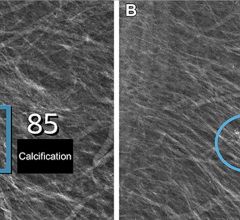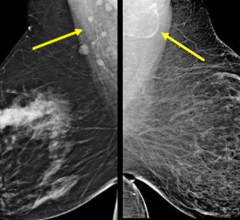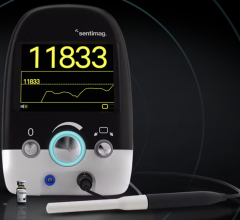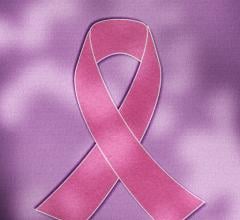
When it comes to breast imaging, the professionals at West Coast Radiology Centers in Orange County, CA, believe that best-fit technology equals better care. Established in 1988, the multimodality outpatient imaging practice adopted digital technology across most modalities. In keeping with that philosophy, the West Coast Breast Centers (WCBC) were the final division to make that transition, thus concluding the practice’s vision of becoming a fully digital operation. In establishing a dedicated breast imaging practice, Executive Director Tim Chavez noted that it was critically important “to provide the best technology that would allow our radiologists to provide the best quality interpretation.” For mammography, that choice was the Hologic direct-capture technology. “After extensive research, we felt that the Selenia digital mammography system was the best on the market because of the superior plate technology and workflow management,” Chavez explained.
Workflow was a key consideration for the busy practice, which serves 150 patients each day at two sites and takes 40,000 mammograms in a year. “Compared to analog that required performing the exam, going to the darkroom, scanning the film for CAD and then hand carrying the images to the radiologist, we are now much more efficient,” Chavez noted. “The digital package moves seamlessly and the communication between technologists and radiologists is much faster.”
Samantha Kubaska, M.D., WCBC’s medical director, concurred. “With digital equipment, images are available to the technologist immediately, reducing exam time up to 50 percent,” she said. Because images are taken and viewed instantly, there’s no need to take the patient in and out of the room for additional views or keep patients waiting while films are processed.
That efficiency pleases her patients, too. “If for some reason the patient moved or positioning wasn’t optimal, the technologist can see that right then and there and respond appropriately. When the patients are done, they are free to go. You hear patients in the hallway saying ‘Is that it? I can go?’ And they love it from a screening point of view,” Dr. Kubaska said.
The benefits of increased efficiency and optimized workflow were only a small part of WCBC’s decision to go digital. “Our premise is, and always has been, that we’re here to take care of our patients. It’s all about providing the highest level of care, and constantly retooling and looking for ways we can improve,” Chavez said.
“The Selenia image quality is better, the resolution is higher, my ability to see through dense tissue is notably improved. As a radiologist, these are the mammographic tools I need to find breast cancer in its earliest stage,” Dr. Kubaska asserted. “From my personal point of view, I am very pleased with the system, and I feel as if I’m doing a better job for my patients.”
When establishing WCBC it was key to choose not just technology but also a
vendor who could help the group achieve its vision. In addition to Hologic’s Selenia digital mammography systems, the practice uses complementary Hologic equipment, including the SecurView diagnostic workstation, the MultiCare Platinum prone stereotactic breast biopsy table and the Suros ATEC Sapphire vacuum-assisted breast biopsy system.
“We’re pleased that we’re able to utilize the Suros ATEC system for MR-guided, stereotactic and ultrasound-guided breast biopsies — therefore eliminating the need for multiple devices — and that to me is very important for this practice,” Chavez explained.
As a board-certified, fellowship-trained dedicated breast radiologist, Dr. Kubaska is impressed by the convenience of the Suros ATEC system. “I found the Suros ATEC the most user-friendly,” she said. “I don’t want to spend valuable time with the mechanics of the vacuum-assisted portion. I just want to walk in and
perform the breast biopsy. I don’t want to set up the vacuum or deal with the buttons on the console itself. The technologists found there was a huge difference in how easy
it was to use the Suros ATEC versus other systems.”
The learning curve for technologists doing breast MR is easier as well. “Not everybody has technologists who do mammography and who also do breast MRI,” Dr. Kubaska noted. “Sometimes it’s completely separate. I have mammography technologists and then I have an MRI technologist. My MRI technologist knows nothing about how to biopsy the breast, so this is all new to that person. Because the ATEC is so easy to use, teaching that person has been very easy,” she explained.
The simplicity of the Suros products has come in handy for the radiologists who cover for Dr. Kubaska. “I found the Suros ATEC device and Sapphire console to be an easier system to teach someone who doesn’t perform breast biopsy on a frequent basis,” she said.
Improved accuracy, convenience and image quality have proven to be the best fit for WCBC. The centers and their dedication to digital technology support Dr. Kubaska’s personal philosophy as well. “I tell my friends to have a digital mammogram because I believe the sensitivity is higher than an analog mammogram. Come to our center — should you need anything else done — we have top of the line equipment in all areas and a dedicated group of breast radiologists who are very experienced in performing all of these procedures,” she stated.


 July 29, 2024
July 29, 2024 








